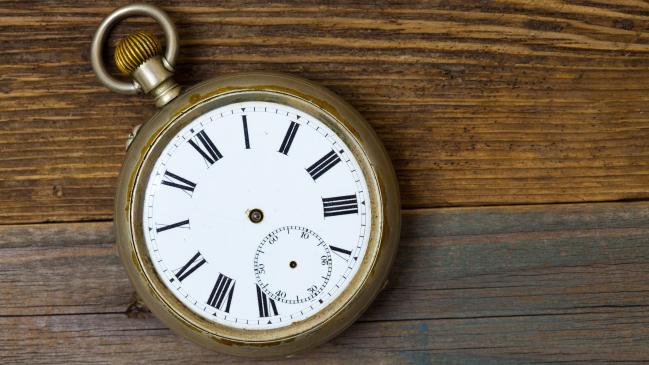TIMELESS: Tenecteplase No Help Late After Ischemic Stroke Onset
“If I were to write the guidelines, I would recommend against using it. There is no benefit for this approach,” Tudor Jovin says.

MUNICH, Germany—Tenecteplase (TNKase; Genentech) doesn’t improve outcomes when administered to patients selected with advanced imaging late after acute ischemic stroke onset, with most undergoing mechanical thrombectomy, the randomized TIMELESS trial shows.
Despite a higher rate of complete recanalization at 24 hours with tenecteplase versus placebo, there was no significant shift in functional outcomes according to modified Rankin Scale (mRS) scores at 90 days (common OR 1.13; 95% CI 0.81-1.56), Greg Albers, MD (Stanford University, Palo Alto, CA), reported last week at the European Stroke Organisation Conference (ESOC).
However, according to Albers, “we can say that an IV thrombolytic can be safely given in carefully selected patients out to 24 hours. We had no safety concerns in terms of hemorrhage or other adverse events.”
Previously, the DAWN and DEFUSE 3 trials demonstrated that patients with a favorable imaging profile can benefit from thrombectomy performed up to 24 hours after stroke onset, although rates of good outcomes remained below 50%, Albers noted. Earlier trials of thrombectomy, including SWIFT PRIME and EXTEND-IA, had better outcomes in both the intervention and control arms compared with the newer trials, possibly due to all of those patients receiving IV thrombolysis before the procedure.
Thus, the TIMELESS investigators hypothesized that adding IV thrombolysis with tenecteplase—which has been shown to have some advantages over alteplase—could improve outcomes of patients treated in late time windows with or without mechanical thrombectomy.
“This is now the question,” commented Tudor Jovin, MD (Cooper University Health Care, Camden, NJ), who was not involved in the study. “In patients who are candidates for thrombectomy, should we give lytic drugs prior to [the procedure] even in the extended time window? And the answer, I think, is no.”
The TIMELESS Trial
For TIMELESS, investigators enrolled 458 patients (mean age about 72; 54% women) across more than 100 US and Canadian sites. All participants presented 4.5 to 24 hours after acute ischemic stroke onset and had imaging findings (mostly on CT perfusion) reflective of salvageable brain tissue. They were randomized to tenecteplase 0.25 mg/kg (maximum dose of 25 mg) or placebo.
The trial included patients with ICA, M1, or M2 occlusions in addition to a target mismatch profile on CT perfusion or MRI/MR perfusion imaging, as assessed using RAPID software (iSchemaView). Patients were required to have an ischemic core volume under 70 mL, a mismatch ratio of 1.8 or greater, and a mismatch volume of at least 15 mL.
I personally think that thrombolysis probably is not going to be the most-rewarding path to improving these outcomes. Tudor Jovin
The median NIHSS score at baseline was 12, and the median ASPECTS was 8. Overall, 77% of patients ultimately underwent mechanical thrombectomy. The median time from stroke onset to administration of study drug was about 13 hours, and the mean time from when the study drug was given to the start of thrombectomy was a little under 20 minutes.
The primary efficacy endpoint was the ordinal mRS at 90 days, with no difference between the tenecteplase and placebo groups. No significant heterogeneity was seen across various subgroups, although there were some suggestive findings, Albers said.
The most provocative, he said, was a hint that patients with M1 occlusions (about half of the trial population) derived benefit from tenecteplase. In this group, the proportion of patients who were functionally independent (mRS score of 0 to 2) at day 90 was 45.9% with tenecteplase and 31.4% with placebo (adjusted nominal P = 0.017). Albers stressed, however, that this is hypothesis-generating only and “no formal conclusion should be drawn from this subgroup analysis.”
In the overall trial cohort, there was no difference in the rate of functional independence (nominal P = 0.41), although the rate of complete recanalization at 24 hours after randomization was significantly higher with tenecteplase (76.7% vs 63.9%; nominal P = 0.006).
In terms of safety, they had “fantastic news,” Albers said, pointing to low rates of symptomatic intracranial hemorrhage (3.2% with tenecteplase and 2.3% with placebo) and parenchymal hemorrhage type 2 (3.7% vs 2.8%). There were also no differences between the treatment and control groups for any intracranial hemorrhage (48.2% vs 48.6%), death (19.7% vs 19.6%), or serious adverse events (41.7% vs 47.7%).
A Need to Explore Other Options
Jovin said he’s not surprised that TIMELESS failed to show a benefit of tenecteplase in the late time window because a prior meta-analysis showed that when giving IV thrombolysis before thrombectomy, it’s more effective when administered early after stroke onset. “It seems that lytics work if they’re given very early in conjunction with thrombectomy and afterwards they don’t work anymore,” Jovin said, noting that the TIMELESS findings are consistent with this. “I did not expect this to be a positive trial.”
Although TIMELESS showed giving tenecteplase to selected patients in the late window is safe, he added, “I don’t think there’s any reason to give [it] prior to thrombectomy in patients beyond 6 hours and probably beyond 3 hours” based on the prior meta-analysis.
Jovin said if he were to update guidelines based on these findings, “I would recommend against using it. There is no benefit for this approach. I don’t see why it should be used.”
That said, there is a need for additional therapies to improve the outcomes of these patients, Jovin indicated.
“I don’t think that we should stop here. I don’t think we should be complacent about the results that we’re getting. Still, there were plenty of patients that had less-than-ideal outcomes in this dataset,” he said. “So, we can do better, but I personally think that thrombolysis probably is not going to be the most-rewarding path to improving these outcomes. I think that different drugs that work on microcirculation or neuroprotection is probably [where] we need to explore new opportunities in the future.”
Todd Neale is the Associate News Editor for TCTMD and a Senior Medical Journalist. He got his start in journalism at …
Read Full BioSources
Albers GW. Efficacy and safety of tenecteplase in patients with late-window acute ischaemic stroke and evidence of salvageable tissue: results from the phase III TIMELESS trial. Presented at: ESOC 2023. May 24, 2023. Munich, Germany.
Disclosures
- Genentech sponsored the study.
- Albers reports having served as a consultant for Genentech and iSchemaView and holding equity in iSchemaView.





Comments